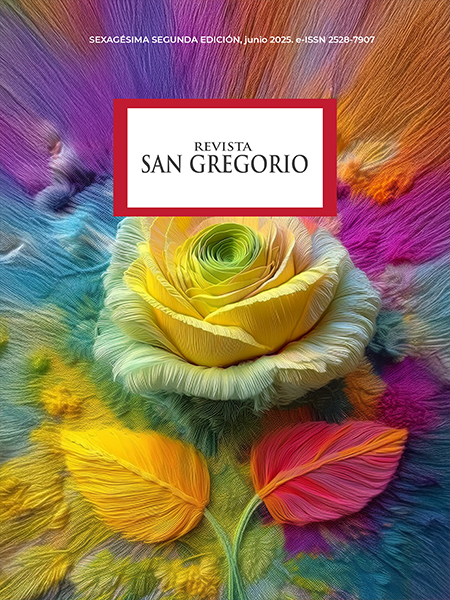Si no puedo pagarlo, compraré imitaciones: Influencia de la cultura de réplicas en el valor percibido por el consumidor de los productos de lujo
DOI:
https://doi.org/10.36097/rsan.v1i62.3522Palabras clave:
Falsificación, comportamiento del consumidor, réplicas, productos de lujo, valor percibidoResumen
Con la creciente tendencia de la cultura de réplicas y la compra de productos falsificados en la industria textil y de la moda, este tema ha recibido escasa atención en la investigación en marketing. El propósito de este estudio es examinar los efectos de la falsificación en el valor percibido del producto por parte de los consumidores. Se utilizaron formularios de encuestas cuantitativas a clientes (N=150) para recopilar datos de consumidores en Pakistán. El estudio se basa en el marco teórico del valor percibido por el cliente (CPV, por sus siglas en inglés) y realiza un análisis de ecuaciones estructurales (SEM) para examinar los efectos de la cultura de réplicas sobre cuatro dimensiones del CPV: valor emocional, valor social, calidad y precio. Se utilizó regresión lineal múltiple para probar la relación entre las variables independientes y dependientes. Los hallazgos de la investigación sugieren las cuatro dimensiones del valor percibido están positivamente correlacionadas con las réplicas de productos de lujo. Los valores social y emocional emergieron como constructos de orden superior, mientras que la funcionalidad y el precio fueron percibidos como valores de segundo orden. Los resultados del estudio son útiles para diseñar propuestas de valor dentro de este ámbito. Las marcas de lujo también pueden utilizar estos hallazgos al desarrollar estrategias antipiratería que atraigan a los consumidores hacia productos originales. La falsificación es un mercado emergente en las naciones en desarrollo y atrae a los clientes al responder a su necesidad de estatus social.
Descargas
Referencias
Al Atat, M. (2020). Review of Factors Affecting Non-Deceptive Consumers of Counterfeited Products in Different Regions across Sectors. Management Studies and Economic Systems, 5(3/4), 85–104. https://www.msaes.org/article_119094.html
Arli, D., Gil, L., & van Esch, P. (2020). The effect of religiosity on luxury goods: The case of Chilean youths. International Journal of Consumer Studies, 44(3), 181-190.https://doi.org/10.1111/ijcs.12559
Babin, B. J., Darden, W. R., & Griffin, M. (1994). Work and/or Fun: Measuring Hedonic and Utilitarian Shopping Value. Journal of Consumer Research, 20(4), 644–656. https://www.jstor.org/stable/2489765
Bian, X., & Moutinho, L. (2011). The Role of Brand Image, Product Involvement, and Knowledge in Explaining Consumer Purchase Behaviour of Counterfeit: Direct and Indirect Effects. European Journal of Marketing - EUR J MARK, 45, 191–216. https://doi.org/10.1108/03090561111095658
Blut, M., Chaney, D., Lunardo, R., Mencarelli, R., & Grewal, D. (2024). Customer Perceived Value: A Comprehensive Meta-analysis. Journal of Service Research, 27(4), 501–524. https://doi.org/10.1177/10946705231222295
Chand, V. S., & Fei, C. (2021). Self-brand connection and intention to purchase a counterfeit luxury brand in emerging economies. Journal of Consumer Behaviour, 20(2), 399–411. https://doi.org/10.1002/cb.1871
Chaudhry, P. E. (2022). Dupe influencers exploiting social media to peddle luxury fakes. Business Horizons, 65(6), 719–727. https://doi.org/10.1016/j.bushor.2022.07.005
Chaudhry, P., & Zimmerman, A. (2009a). The Economics of Counterfeit Trade: Governments, Consumers, Pirates and Intellectual Property Rights. In tThe Economics of Counterfeit Trade: Governments, Consumers, Pirates and Intellectual Property Rights. https://doi.org/10.1007/978-3-540-77835-6
Chaudhry, P., & Zimmerman, A. (2009b). The Economics of Counterfeit Trade: Governments, Consumers, Pirates and Intellectual Property Rights. Springer. https://doi.org/10.1007/978-3-540-77835-6
Chen, J., Teng, L., Liu, S., & Zhu, H. (2015). Anticipating regret and consumers’ preferences for counterfeit luxury products. Journal of Business Research, 68(3), 507–515. https://doi.org/10.1016/j.jbusres.2014.09.012
Dampérat, M., Drago, P., & Larivet, S. (2002). Vendre L’expérience D’un Autre Moi. Décisions Marketing, 28, 23–32. https://shs.cairn.info/revue-decisions-marketing-2002-4-page-23?lang=fr&tab=illustrations
Dhaliwal, A., & Singh, D. (2018). The Notorious Practice of Counterfeiting. International Journal of Management Studies, 5, 38. https://doi.org/10.18843/ijms/v5i4(4)/05
Hair, J. F., Risher, J. J., Sarstedt, M., & Ringle, C. M. (2019). When to use and how to report the results of PLS-SEM. European Business Review, 31(1), 2–24. https://doi.org/10.1108/EBR-11-2018-0203
Hasim, M. A., Manaf, S. A., & Ali, A. M. (2020). Role of price towards customer satisfaction. European Journal of Molecular and Clinical Medicine, 7, 4179–4190. https://www.researchgate.net/publication/348200956_Role_of_price_towards_customer_satisfaction
Hofstede, G. (2011). Dimensionalizing Cultures: The Hofstede Model in Context. Online Readings in Psychology and Culture, 2(1). https://doi.org/10.9707/2307-0919.1014
Hu, L., & Bentler, P. M. (1999). Cutoff criteria for fit indexes in covariance structure analysis: Conventional criteria versus new alternatives. Structural Equation Modeling, 6(1), 1–55. https://doi.org/10.1080/10705519909540118
Hussain, A. (2023). Counterfeit Intentions of Pakistani Consumers: Effect of Personal and Social Orientation on Counterfeit Purchasing Intentions. Journal of Management Practices, Humanities and Social Sciences, 7(1). https://doi.org/10.33152/jmphss-7.1.5
Jia, X., Khaliq, A., Nadeem, M., & Akhtar, N. (2022). Impact of Perceived Influence, Virtual Interactivity on Consumer Purchase Intentions Through the Path of Brand Image and Brand Expected Value. Frontiers in Psychology, 13, 947916. https://doi.org/10.3389/fpsyg.2022.947916
Jiang, L., & Shan, J. (2018). Genuine brands or high quality counterfeits: An investigation of luxury consumption in China. Canadian Journal of Administrative Sciences / Revue Canadienne Des Sciences de l’Administration, 35, 183–197. https://doi.org/10.1002/cjas.1416
Le Roux, A., Thebault, M., & Roy, Y. (2019). Do product category and consumers’ motivations profiles matter regarding counterfeiting? Journal of Product & Brand Management, 28. https://doi.org/10.1108/JPBM-06-2018-1923
Lee, S.-H., & Chang, Y.-K. (2007). The Effects of Fashion Luxury Brand Loyalty on Attitudes toward Counterfeits. Journal of the Korean Society of Clothing and Textiles, 31. https://doi.org/10.5850/JKSCT.2007.31.3.475
Leroi-Werelds, S. (2019). An update on customer value: State of the art, revised typology, and research agenda. Journal of Service Management, 30(5), 650–680. https://doi.org/10.1108/JOSM-03-2019-0074
Liu, J., Wakeman, W., & Norton, M. (2024). The egalitarian value of counterfeit goods: Purchasing counterfeit luxury goods to address income inequality. Journal of Consumer Psychology, 35(2), 269-280. https://doi.org/10.1002/jcpy.1431
Loureiro, S. M. C., de Plaza, M. A. P., & Taghian, M. (2020). The effect of benign and malicious envies on desire to buy luxury fashion items. Journal of Retailing and Consumer Services, 52(C). https://ideas.repec.org//a/eee/joreco/v52y2020ics0969698918304132.html
Marcketti, S., & Shelley, M. (2009). Consumer concern, knowledge and attitude towards counterfeit apparel products. International Journal of Consumer Studies, 33, 327–337. https://doi.org/10.1111/j.1470-6431.2009.00748.x
Mourad, S., & Valette-Florence, P. (2011). The effects of counterfeit on luxury brand buying behavior, in terms of consumption experience. Hal HS. https://shs.hal.science/halshs-00660417/
Muhammad, R., Yaqub, R. M., Campus, G., Ahmed, Nasir, J., Sharif, M., & Javed, F. (2015). Determinants of Customer Perception Regarding Purchase of Counterfeit Garments, Evidence from Rahim Yar Khan Region(Pakistan). Journal of Marketing and Consumer Research, 15, 160–173. https://www.iiste.org/Journals/index.php/JMCR/article/download/25896/26379
Muneer, A., Soomro, M., & Dayo, A. (2020). Is consumer lifestyle affected by genuine or counterfeit brands? An empirical study. SALU-Commerce & Economics Review, 5(1), 85-98. https://www.researchgate.net/publication/340793493_Is_consumer_lifestyle_affected_by_genuine_or_counterfeit_brands_An_empirical_study
Ndofirepi, T. M., Chuchu, T., Maziriri, E., & Nyagadza, B. (2022). Examining the influence of price-quality inference and consumer attitudes on the inclination to buy non-deceptive counterfeit goods: Evidence from South Africa. European Journal of Management Studies, 27(3), 317–339. https://doi.org/10.1108/EJMS-04-2022-0026
Nisar, N., Awan, A., & Ahsan, S. (2023). Unveiling Brand Piracy: Examining Consumer Perception of Counterfeit Products in Pakistan. Pakistan Social Sciences Review, 7(3). https://doi.org/10.35484/pssr.2023(7-III)51
Penz, E., & Stoettinger, B. (2012). A comparison of the emotional and motivational aspects in the purchase of luxury products versus counterfeits. Journal of Brand Management, 19, 581–594. https://doi.org/10.1057/bm.2012.7
Penz, E., & Stöttinger, B. (2008). Corporate image and product similarity—Assessing major demand drivers for counterfeits in a multi-country study. Psychology & Marketing, 25(4), 352–381. https://doi.org/10.1002/mar.20213
Perez, M., Castaño, R., & Quintanilla, C. (2010). Constructing identity through the consumption of counterfeit luxury goods. Qualitative Market Research: An International Journal, 13, 219–235. https://doi.org/10.1108/13522751011053608
Phau, I., & Teah, M. (2009a). Devil wears (counterfeit) Prada: A study of antecedents and outcomes of attitudes towards counterfeits of luxury brands. Journal of Consumer Marketing, 26. https://doi.org/10.1108/07363760910927019
Phau, I., & Teah, M. (2009b). Devil wears (counterfeit) Prada: A study of antecedents and outcomes of attitudes towards counterfeits of luxury brands. Journal of Consumer Marketing, 26. https://doi.org/10.1108/07363760910927019
Poddar, A., Foreman, J., Banerjee, S. (Sy), & Ellen, P. S. (2012). Exploring the Robin Hood effect: Moral profiteering motives for purchasing counterfeit products. Journal of Business Research, 65(10), 1500–1506. https://doi.org/10.1016/j.jbusres.2011.10.017
Pueschel, J., Parguel, B., & Chamaret, C. (2020). Talking about my generation: How values shape luxury consumption. Recherche et Applications En Marketing (English Edition), 36. https://doi.org/10.1177/2051570720966273
Renganathan, S., & Teh, G. (2023). The Effect of Social Media Influencers on Fashion Counterfeit Purchase Intention among Young Generation. Information Management and Business Review, 15, 128–143. https://doi.org/10.22610/imbr.v15i2(I)SI.3427
Samaddar, K., & Gandhi, A. (2022). Exploring Customer Perceived Value towards non-deceptive counterfeiting: A grounded theory approach. South Asian Journal of Business Studies, 13. https://doi.org/10.1108/SAJBS-07-2021-0259
Shan, J., Jiang, L., Peng Cui, A., Wang, Y., & Ivzhenko, Y. (2022). How and when actual-ideal self-discrepancy leads to counterfeit luxury purchase intention: A moderated mediation model. International Journal of Consumer Studies, 46(3), 818–830. https://doi.org/10.1111/ijcs.12730
Shepherd, D., Whitman, K., Button, M., & Wilson, J. M. (2023). The Impact of Deviant Social Media Influencers and Consumer Characteristics on Purchasing Counterfeit Goods. Deviant Behavior, 44(12), 1746–1760. https://doi.org/10.1080/01639625.2023.2233041
Sheth, J. N., Newman, B. I., & Gross, B. L. (1991). Why we buy what we buy: A theory of consumption values. Journal of Business Research, 22(2), 159–170. https://doi.org/10.1016/0148-2963(91)90050-8
Sondhi, N. (2017). Scale development & validation for assessing attitude towards counterfeit luxury. Procedia Computer Science, 122, 206–213. https://doi.org/10.1016/j.procs.2017.11.362
Song, L., Meng, Y., Chang, H., Li, W., & Tan (Frank), K. (2021). How counterfeit dominance affects luxury fashion brand owners’ perceptions: A cross-cultural examination. Journal of Business Research, 130, 1–13. https://doi.org/10.1016/j.jbusres.2021.02.046
Sweeney, J. C., & Soutar, G. N. (2001a). Consumer perceived value: The development of a multiple item scale. Journal of Retailing, 77(2), 203–220. https://doi.org/10.1016/S0022-4359(01)00041-0
Sweeney, J. C., & Soutar, G. N. (2001b). Consumer perceived value: The development of a multiple item scale. Journal of Retailing, 77(2), 203–220. https://doi.org/10.1016/S0022-4359(01)00041-0
Tang, F., Tian, V.-I., & Zaichkowsky, J. (2014). Understanding counterfeit consumption. Asia Pacific Journal of Marketing and Logistics, 26, 4–20. https://doi.org/10.1108/APJML-11-2012-0121
Wiedmann, K.-P., Hennigs, N., & Klarmann, C. (2017). Luxury Consumption in the Trade-Off Between Genuine and Counterfeit Goods: What Are the Consumers’ Underlying Motives and Value-Based Drivers? (pp. 85–122). https://doi.org/10.1007/978-3-319-51127-6_6
Wilcox, K., Kim, H., & Sen, S. (2009). Why Do Consumer Buy Counterfeit Luxury Brands? Journal of Marketing Research, 46, 247–259. https://doi.org/10.1509/jmkr.46.2.247
Williams, A., & Soutar, G. (2009). Value, satisfaction and behavioral intentions in an adventure tourism context. Annals of Tourism Research, 36, 413–438. https://doi.org/10.1016/j.annals.2009.02.002
Wu, Q., & Zhao, S. (2021). Determinants of Consumers’ Willingness to Buy Counterfeit Luxury Products: An Empirical Test of Linear and Inverted U-Shaped Relationship. Sustainability, 13(3). https://doi.org/10.3390/su13031194
Zafar, A., Shahzad, M., & Islam, T. (2020). Relation of impulsive urges and sustainable purchase decisions in the personalized environment of social media. Sustainable Production and Consumption, 25. https://doi.org/10.1016/j.spc.2020.11.020
Zeithaml, V. (1988). Consumer Perceptions of Price, Quality and Value: A Means-End Model and Synthesis of Evidence. Journal of Marketing, 52, 2–22. https://doi.org/10.1177/002224298805200302
Descargas
Publicado
Número
Sección
Licencia
Derechos de autor 2025 Muhammad Zafran

Esta obra está bajo una licencia internacional Creative Commons Atribución-NoComercial-SinDerivadas 4.0.















